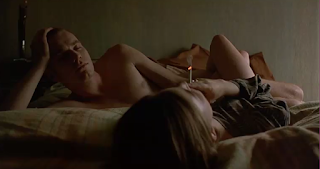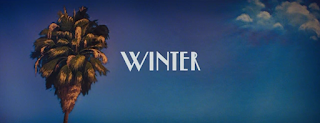Discuss How Important Cinematography is in Establishing Strong Responses From Spectators To A Key Character In La La Land. The sequence begins with a still image of a palm tree, and the season being "winter", this juxtaposing image is revealed to be nothing more than a backdrop, which begins to ripple due to the wind, it is five years later and we pan downwards towards a car door opening, in the background we can see a classical blue car, contrasted with this new modern vehicle that has now opened its door to reveal two black heels, we see the winter leaves flowing on the floor and the sun brightly shining, adding to this juxtaposition of weather, Even though the season is winter, the sun and its colours, and the palm tree, illuminate the scene with life, and the illuminator is this woman. The palm tree also has connotations of Los Angeles, Hollywood, which is the home of American film as we know it, and so we, as the spectator, knowing this information, assume that the wo...





